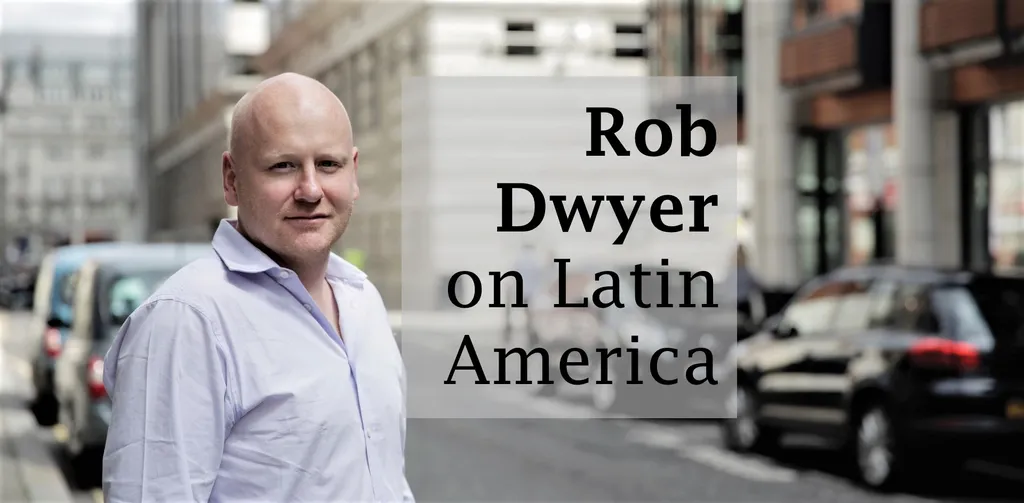In 2002, when Luiz Inácio Lula da Silva, known universally as Lula, won his first presidential election, Brazil’s state banks had a roughly 34% share of the country’s credit market. In the following administrations of his Workers’ Party (PT) – two for Lula and six years for his successor Dilma Rousseff – that ratio grew to 56%.
The common interpretation of the growing domination of the state banks Banco do Brasil, Caixa Econômica and development bank BNDES is that the government priced out the private banks during this time: the state banks undercut lending rates, so the private banks – unable to compete – had to stand by, passively watching their portfolios shrink.
This is, at best, half true. In the early days of Lula’s first government, the banks – spooked by the possibility of a socialist government – took a risk-off approach to credit extension, much in the same way as Brazilian and international investors took to capital flight out of the country.
Private-sector banks’ share of private credit is now more than 57% and there is little chance of it shrinking under another PT administration
The subsequent growth in the state banks’ exposure to retail and corporate segments was as much a consequence of the large banks maintaining their walls around their low risk, profitable business as it was extra credit going to companies and individuals that would never have been financed otherwise.
Then there was BNDES. Sure, in retrospect the development bank’s decision to create national champions and finance large Brazilian businesses that could have found financing elsewhere was flawed. But, at the time, there was almost no long-term financing – and that’s where BNDES came in to plug a funding gap that allowed these organizations to finance large M&A.
Now there is a widespread recognition that BNDES went too far in targeting large businesses – there was arguably crowding out in this segment – coupled with a lack of imagination in financing smaller ventures that could have helped Brazil grow in valuable export markets.
All change
Today, however, there isn’t much scope for a return to the past. Private-sector banks’ share of private credit is now more than 57% – and there is little chance of it shrinking under another PT administration.
Why? Well, firstly, BNDES has changed its interest-rate funding mechanism. Its new TJLP rate is market based; sure, it has the ability to undercut private-sector organizations in terms of lower spreads over established curves, but it is essentially playing by the same rules as the private-sector banks.

Also, importantly, BNDES doesn’t want to crowd out the private banks. It has undergone a revolution that has created a role as a fulcrum to encourage private funds through the provision of guarantees and facilitation through its own advisory services.
And recent regulatory changes enable non-recourse financing within Brazil and have opened up a wave of interest in the country’s large infrastructure pipeline.
The results of the first round of elections that took place on Sunday also point to this de-risked Lula. It seems likely that he will win the decisive second round on October 30 – though the incumbent president Jair Bolsonaro will be close on his heels.
However, the results of the congressional elections, which took place on the same day, saw a large proportion of seats going to conservative political parties. This will limit Lula’s ability – should he win – to re-cast the public banks as instruments of fiscal stimulus. No wonder that the shares of Banco do Brasil rose by 7% in the next day’s trading.
Constraints
Elsewhere, in plain-vanilla corporate and retail financing, the private banks do not want to step back at this part of the credit cycle. Nor is the public sector the traditional banks’ main competitor anymore: Banco do Brasil is targeting profitability rather than market share, while its recent results have seen it generate a higher return on equity than Bradesco. Admittedly, this profitability strategy could be pressured under a new Lula administration, but that seems unlikely given the political and fiscal constraints under which he will be operating.
And there are the fintechs – the new digital banking platforms. These are lowering the cost of credit and enhancing the quality of service far better than any state bank could do. It is hard to imagine the chief executives of Brazil’s banks waking up under a future Lula administration with fears of new aggressive competition from the state banks. That competition has already arrived from a new private-sector source – one that doesn’t seem to care about being pro- or anti-cyclical.
The good news for Brazil’s incumbent banks is that any new Lula government would have too much on its plate to worry about using the state banks to weaken private-sector net interest margins. The bad news is that the digital banks will continue to do that job, regardless of who is in the Planalto in January.




